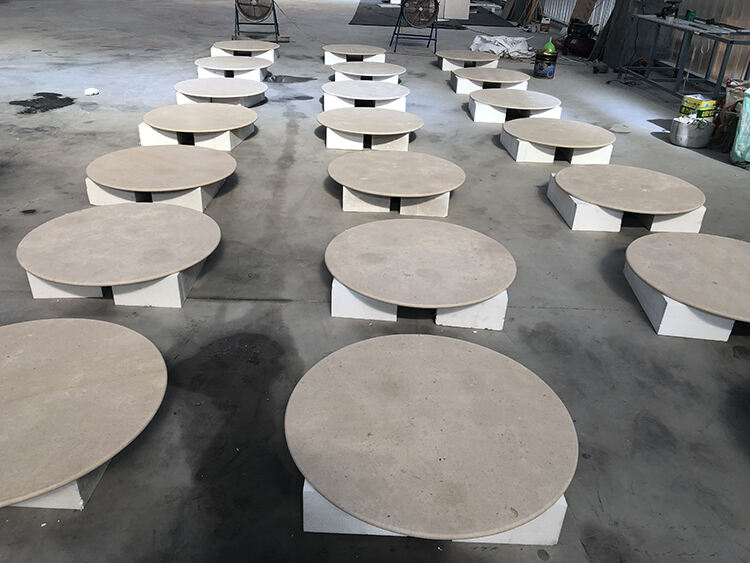Transform Your Outdoor Space with Natural Stone Elements
Creating a stunning garden landscape requires careful consideration of materials that not only enhance visual appeal but also provide practical benefits. Among the various natural stones available, limestone stands out as a versatile and elegant choice that has been used in landscaping for centuries. From ancient Roman gardens to modern sustainable landscapes, this remarkable material continues to captivate garden enthusiasts and landscape designers alike.
The timeless beauty of limestone lies in its natural formation over millions of years, resulting in unique patterns and textures that can't be replicated by artificial materials. As we explore the numerous advantages of incorporating this natural stone into your garden design, you'll discover why it remains a preferred choice for both residential and commercial landscaping projects.
Aesthetic Appeal and Design Versatility
Natural Color Variations and Textures
Limestone comes in an impressive array of colors, ranging from cool grays and creamy whites to warm beiges and rich golden hues. These natural variations allow for seamless integration with existing garden elements and architectural features. The stone's surface can be finished in multiple ways – from smooth and polished to rough and textured – providing endless possibilities for creative design applications.
Each piece of limestone tells its own story through subtle fossilized patterns and natural veining, adding character and visual interest to garden features. These distinctive characteristics make every landscape project unique and personally tailored to the homeowner's vision.
Versatile Applications in Garden Design
The adaptability of limestone makes it suitable for numerous landscaping elements. From elegant pathways and stepping stones to dramatic retaining walls and water features, this natural stone can be used to create cohesive design themes throughout your garden. Garden borders and edging made from limestone provide clean lines and professional finishing touches that elevate the overall appearance of your outdoor space.
Creative applications include raised flower beds, garden benches, and decorative pillars that serve as focal points in the landscape. The material can be cut and shaped to precise specifications, allowing for both traditional and contemporary design interpretations.
Practical Benefits for Garden Environments
Durability and Weather Resistance
One of the most significant advantages of using limestone in garden landscaping is its exceptional durability. When properly sealed and maintained, limestone structures can withstand decades of exposure to various weather conditions. The stone's natural density helps it resist erosion, freezing, and thawing cycles, making it particularly suitable for regions with challenging climates.
Unlike some artificial materials that may fade or deteriorate over time, limestone actually develops a distinctive patina that many gardeners find appealing. This natural aging process enhances the stone's character while maintaining its structural integrity.
Soil pH Balance and Plant Health
Limestone plays a crucial role in maintaining optimal soil conditions for plant growth. As the stone gradually weathers, it releases calcium carbonate, which helps neutralize acidic soils – a common issue in many gardens. This natural pH adjustment creates better growing conditions for a wide variety of plants and promotes healthier root development.
Gardens with limestone elements often experience improved soil structure and enhanced nutrient availability for plants. This natural soil enhancement reduces the need for artificial pH adjusters and supports more sustainable gardening practices.

Environmental and Sustainable Aspects
Natural Resource Conservation
Choosing limestone for your garden landscaping aligns with sustainable design principles. As a natural material, it requires minimal processing compared to manufactured alternatives, resulting in a lower carbon footprint. The stone's longevity means fewer replacements over time, reducing waste and resource consumption.
Local sourcing of limestone further enhances its environmental benefits by reducing transportation impacts and supporting regional economies. Many quarries implement responsible extraction practices, ensuring the material's availability for future generations.
Heat Regulation and Energy Efficiency
Limestone's natural properties contribute to better temperature regulation in garden spaces. The stone's light colors reflect sunlight, helping to reduce heat absorption and create more comfortable outdoor environments during warm seasons. This characteristic can be particularly beneficial when designing seating areas or pathways that receive direct sunlight.
Additionally, limestone's thermal mass properties help moderate temperature fluctuations, providing stability to plant root zones and extending the growing season in some climate zones.
Maintenance and Long-term Value
Care Requirements and Preservation
Maintaining limestone features in your garden requires relatively simple care routines. Regular cleaning with appropriate pH-neutral products helps preserve the stone's natural beauty. Periodic sealing protects against staining and extends the material's lifespan, though limestone's natural resilience means it requires less frequent maintenance than many alternative materials.
Professional restoration services can effectively address any wear or damage that may occur over time, ensuring your limestone features remain attractive and functional for generations to come.
Investment Returns and Property Value
Incorporating limestone elements into your garden landscaping represents a sound investment in your property. The material's durability and timeless appeal contribute to increased property values and enhanced curb appeal. Real estate professionals often highlight natural stone features as premium selling points when marketing properties.
The initial cost of limestone installation is offset by its minimal maintenance requirements and long-term durability, making it a cost-effective choice for discerning homeowners.
Frequently Asked Questions
How Long Will Limestone Garden Features Last?
With proper installation and maintenance, limestone features in your garden can last for decades or even centuries. The material's natural durability, combined with appropriate sealing and care, ensures exceptional longevity in landscape applications.
Can Limestone Be Used Around Pool Areas?
Limestone is suitable for pool surrounds when properly sealed to protect against pool chemicals and moisture. Its naturally slip-resistant surface and cool-to-touch properties make it an excellent choice for pool decking and coping.
What Types of Plants Work Best with Limestone Features?
Most garden plants thrive alongside limestone features, particularly those that prefer neutral to alkaline soil conditions. Mediterranean plants, herbs, and many flowering perennials are especially well-suited to limestone garden environments.
Does Limestone Require Special Installation Techniques?
While limestone installation should be performed by experienced professionals to ensure proper structural support and drainage, the techniques used are standard within the landscaping industry. Professional installation guarantees optimal performance and longevity of your limestone features.

